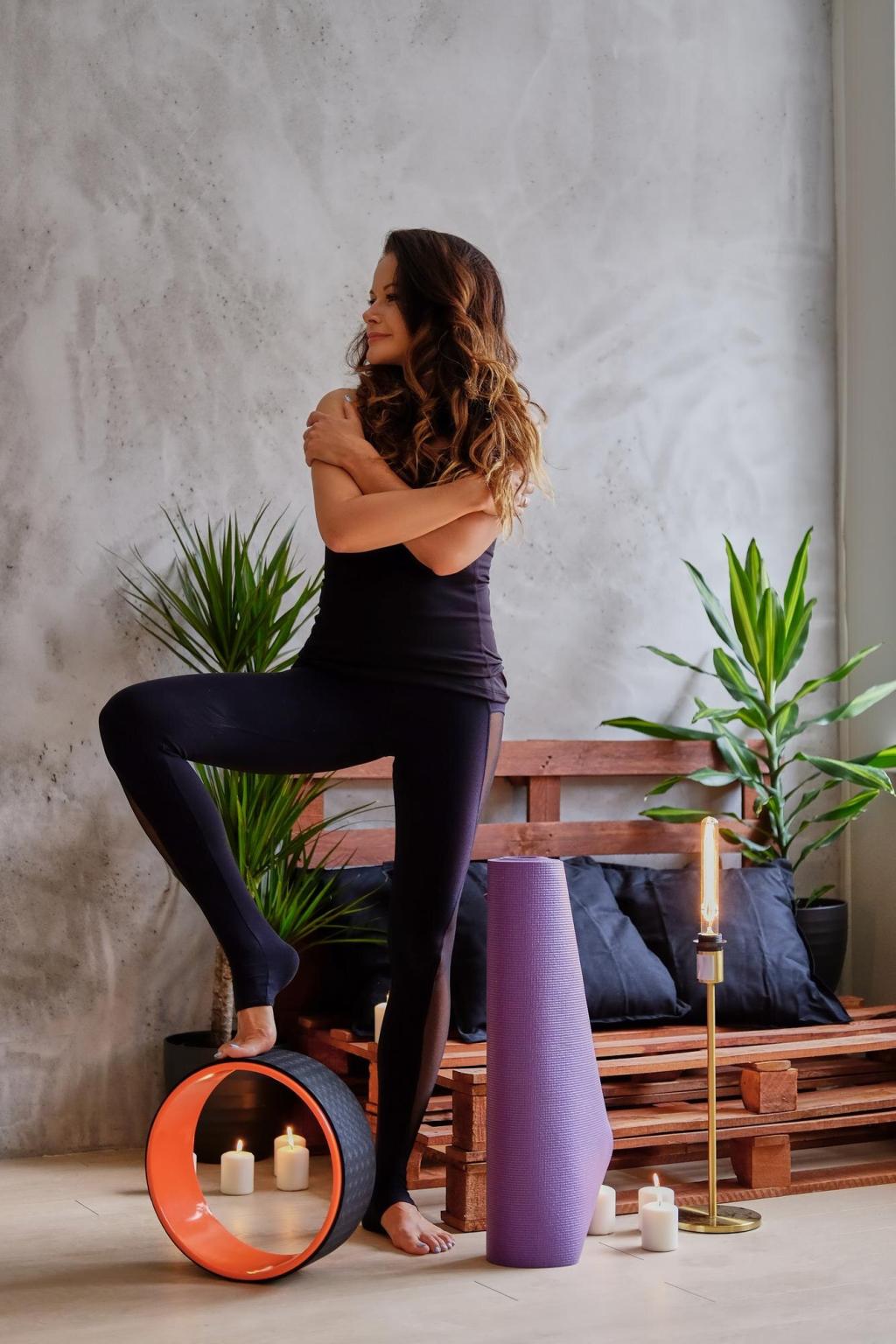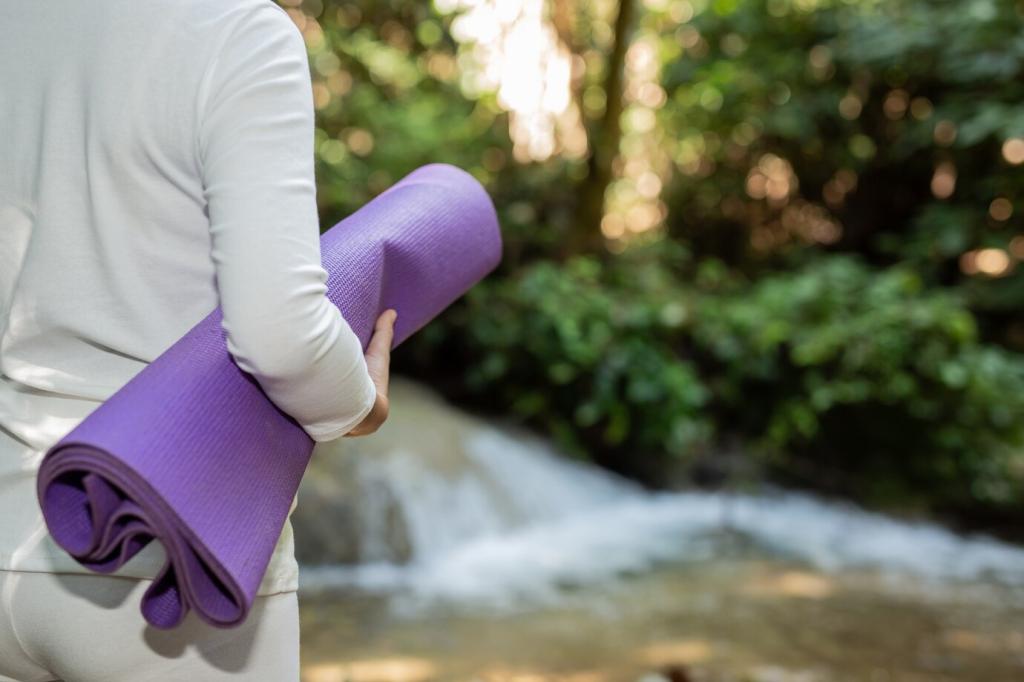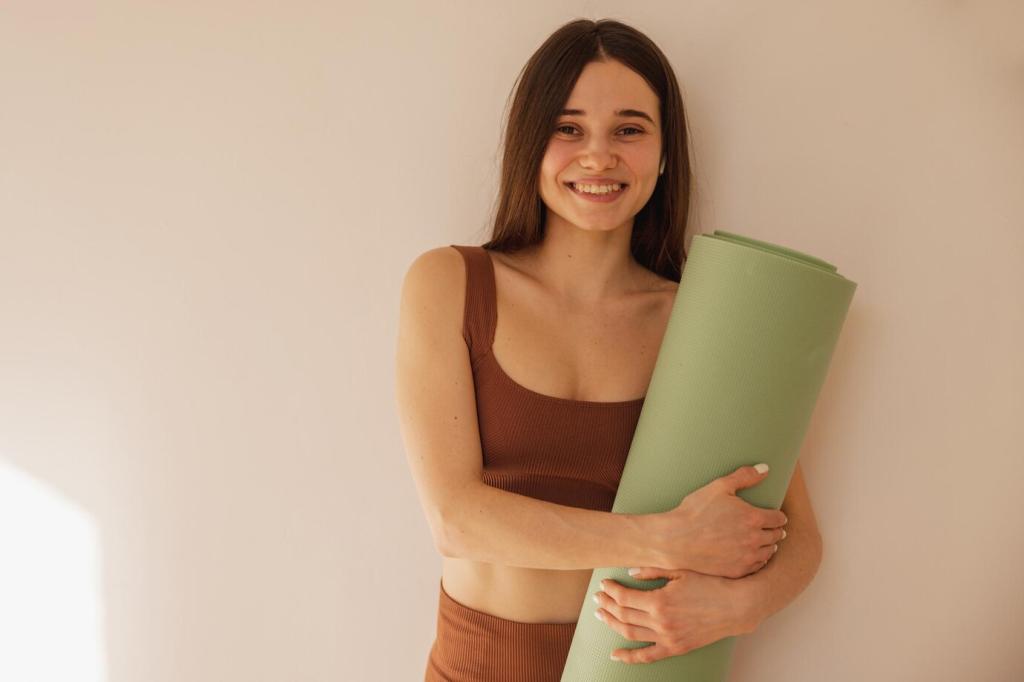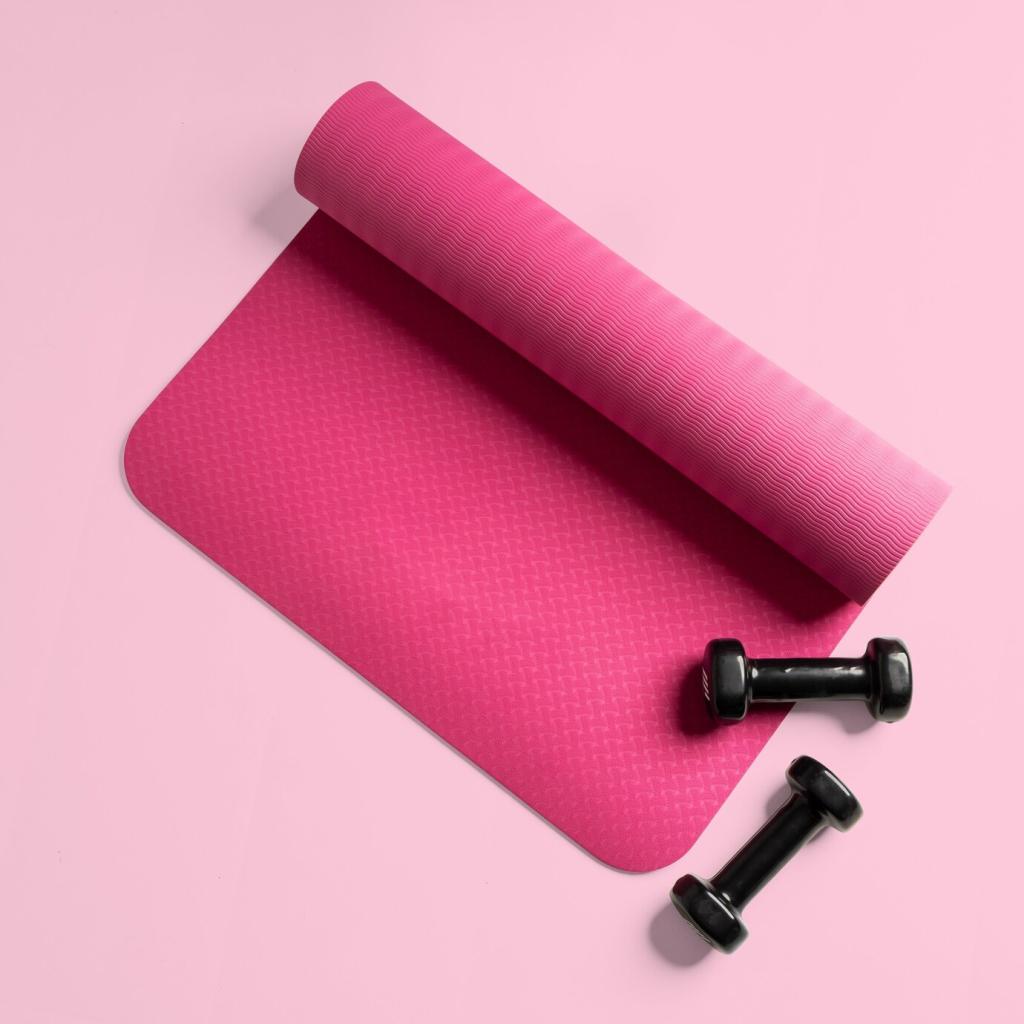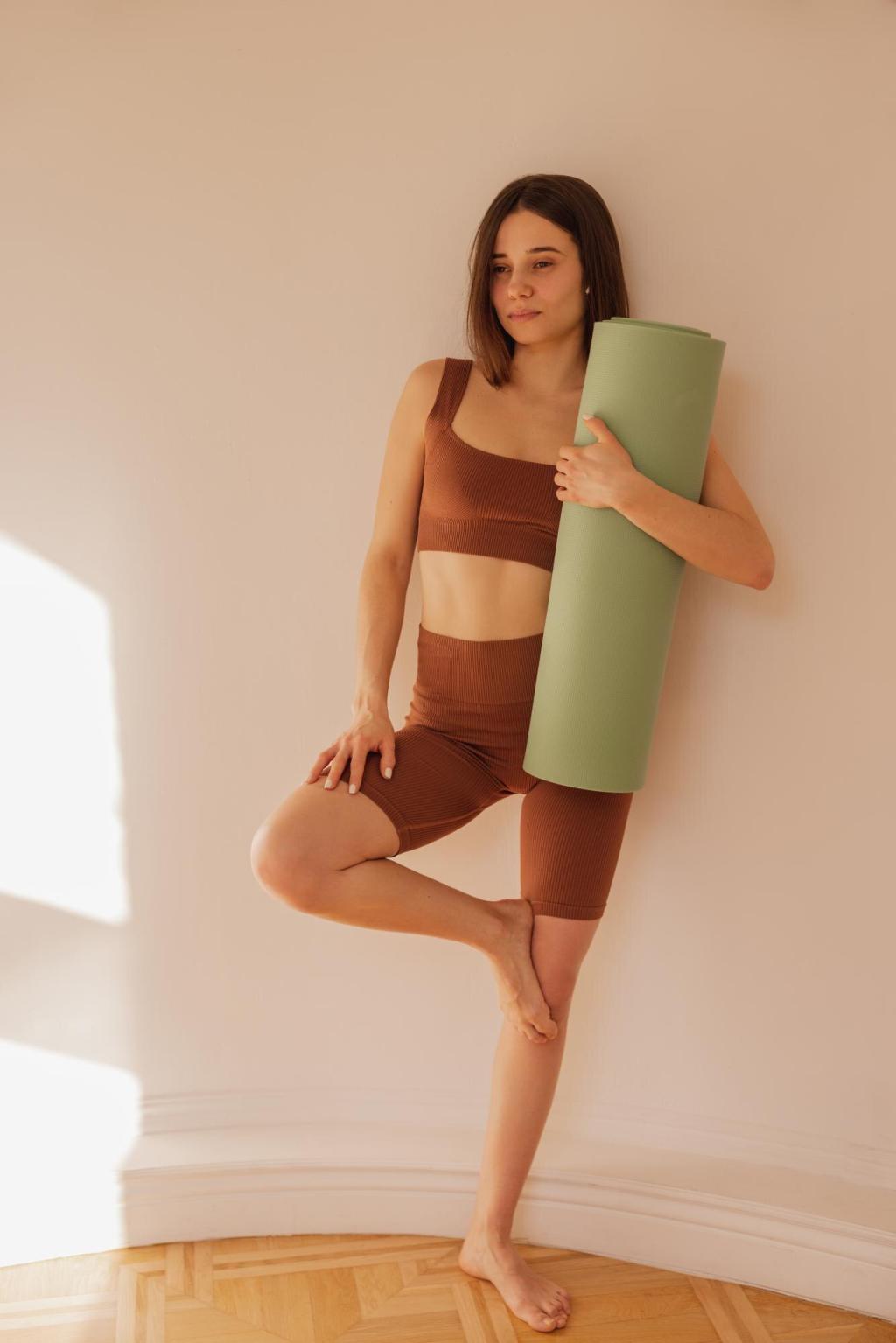Choose Your Calm Corner
Natural light boosts focus, but soft curtains prevent glare during forward folds. Consider privacy from hallway traffic and reduce noise with rugs, bookshelves, or fabric panels. Note which time of day your space feels most peaceful and commit to it.
Choose Your Calm Corner
Choose a grippy mat on stable flooring to protect knees and wrists. Over tile or concrete, add foam tiles beneath the mat. Avoid fluffier carpets that make balancing harder, and test your stance transitioning from Warrior I to II without wobble.

